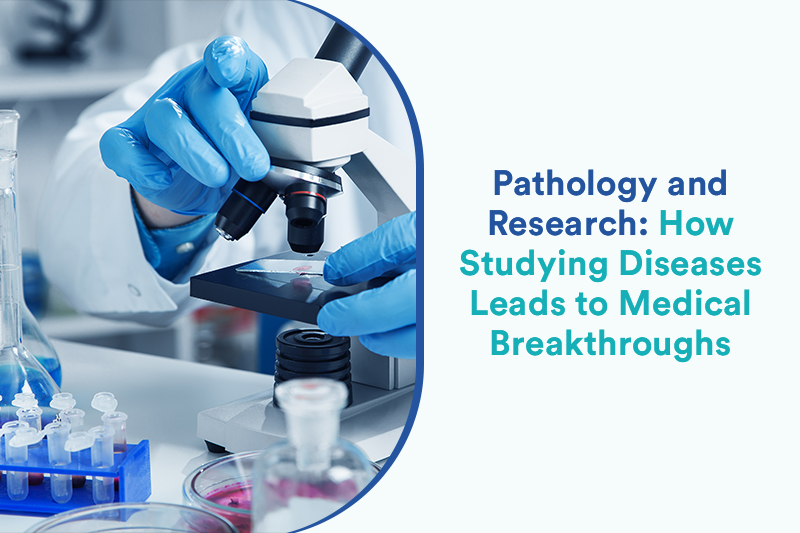Infectious disorders, deficient diseases, hereditary diseases (covering both genetic and non-genetic hereditary diseases), and physiological diseases are the four primary categories of diseases in medical pathology. A disease is any unfavourable deviation from the normal structural or functional state of an organism. Diseases differ from physical injuries in nature and often have specific indications and symptoms. With the emergence of new diseases, scientific advancements that help comprehend the underlying disease processes are made available, along with reviews of more direct therapeutic relevance. Here are some of the most current pathology-related scientific updates:
- Methodology and Technology Advances
New and better methods for posing questions are developed to support advancements in medical research. The first thing to think about is the utilisation of organoids for both fundamental research and their prospective application in therapeutic testing for individualised, tumor-specific medicine. Research is also being done on the integration of organoid cultures into the workplace for people who are new to this particular field. The most recent technical advancements have been discussed, along with the benefits and drawbacks of the present platforms for multiplexed immunohistochemistry and spatial transcriptomics. Additionally, the use of genetics in therapeutics helps speed up the development of new drugs. Harnessing specific occurrences as examples, researchers are evaluating the background and guiding concepts of harnessing human genetics to expedite drug discovery.
- COVID-19
Researchers have been focusing on immunopathology, pathophysiological processes, and therapy approaches for SARS-Cov-2 infections since the appearance of COVID-19. A thorough study of the information now available shows that several pathophysiological systems interact with one another in a complex way. Researchers have been analysing abnormal findings in tissue samples because they have been helpful in understanding pathophysiology and in the creation of novel, evidence-based therapy regimens.
- Advances in Mitochondrial Diseases
Although mitochondria are also engaged in other metabolic pathways, they are best known for their activities in metabolism, particularly oxidative respiration and the creation of ATP. Nuclear genes or mitochondrial genes (approximately 10% of the nuclear genome codes for mitochondrial proteins) can both be mutated to cause mitochondrial disorders. Researchers discuss how minimally invasive blood sampling and next-generation sequencing have revolutionised diagnosis, but there are cases where pathogenicity is not proven, necessitating a multi-omics approach to evaluate the genomic, transcriptomic, proteomic, and metabolomic profiles of affected tissues. For the purpose of comprehending the molecular pathways driving mitochondrial diseases, these analyses of patient tissue samples are essential.
- Advances in Cancer Research
Research on the tumour suppressor protein, p53, has been ongoing for many years, and TP53 is the gene that is most frequently altered in cancers of the human body. Despite this, p53 analysis has not significantly aided in the diagnosis, prognosis, or therapy of any clinical condition. Researchers highlight how the dogmas that resulted from the interpretation of such evidence may have prevented the practical use of this important cancer route. In order to succeed clinically, critical re-evaluation must be the cornerstone of scientific activity in the p53 field as well as in science generally.
Researchers are examining TRIM28’s functions as a cancer suppressor gene. TRIM28 is a widely expressed protein that functions as a transcriptional co-repressor and regulates transposable elements by collaborating with tissues-specific factors. Research in this field enables both individualised patient/family analysis and adds to our understanding of the underlying pathway abnormalities that result in the growth of Wilms tumours.
- Cell Interaction and tissue micro-environments
Researchers investigate how various tissue microbiomes affect cancer genesis, development, and therapeutic response via toxin production, the induction of pro- or anti-inflammatory settings, and nutrition level modulation. Effects of the microbiome can either be localised from the tumour microbiota or systemic, primarily derived from the gut microbiota. As a result, the microbiome plays a variety of roles in cancer and is a significant underdeveloped field of study.
To pursue research in the field of Pathology, enrolling in a Pathology online course that provides in-depth understanding to MBBS students to strengthen foundation would be the best decision. Undergrads can learn pathology online with Pathology for UnderGrads by Prof. Harsh Mohan, Prof. Ramadas Nayak and Dr. Debasis Gochhait.












